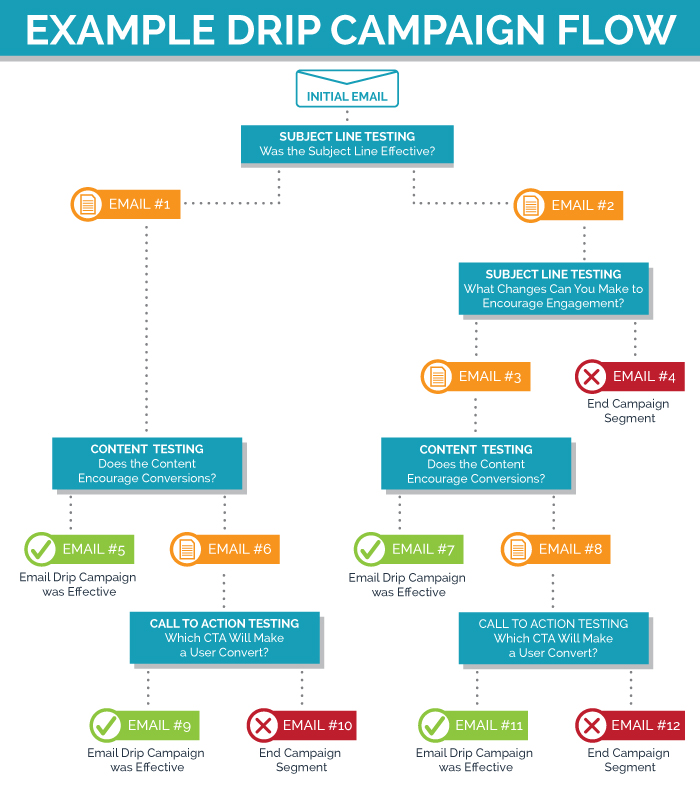We’re back talking email drip campaigns. In our previous article, we went through and gave a basic overview of email drip campaigns (or nurture campaigns)- what they are and how to leverage best practices. This week we share more on establishing this marketing initiative and different A/B testing phases to conduct that will increase the likelihood of success for your campaigns.
To start your campaign, you’ll need to determine your audience. The audience you identify will determine everything from the content that you share to the subscriber list that you target. You are ready to start your drip campaign when you have established the following:
- Target audience
- Value-proposition you bring to that audience
- The conversion action you want them to take (sign-up for newsletter, watch a video, etc.)
Last week our most important piece of advice was test everything! A/B tests are how you will determine what’s working and which tactics should be retired. Here we outline the aspects of your campaign to test and how to evaluate their success.
Messaging
The flowchart below illustrates the testing phases of an email drip campaign that will help to achieve the end goal of engagement from your prospects or clients. At the base level you should split test three major elements of each campaign: subject line, content, and call to action.
- Subject Line Testing: Sending your message out using two different subject lines helps you establish what type of headlines capture your audience’s attention. You can measure the success of each subject line based on open rates and conversions. It can be assumed that the email sent with the higher open rate had the stronger subject line, assuming messages were sent at roughly the same time to the same audience segment. The subject line with the stronger open rate should be used as a roadmap for future campaigns. The lower performing subject line should be reworked or scrapped.
- Content Testing: Your open rate was acceptable but click-through rates and conversions were poor. The recipient lost interest or was not spurned to action once they opened your email. Refining your message, design or layout may help improve the success of the campaign. Develop an alternate message and design layout and test whether this improves interaction.
- CTA Testing: Sometimes your call-to-action misses its mark. It is important to test your CTA itself, but you should also test different types of offers or incentives. The conversions may be higher for the message offering a free checklist download than signing-up for your newsletter. Testing your offers will be an on-going endeavor as you create and find what sparks your potential customers’ and existing customers’ interest.
Timing
Timing is arguably the trickiest part of setting up an email drip campaign.
- How long should you wait before attempting to re-engage subscribers?
- When should you deliver the next relevant piece of information to your audience?
- How often should you engage your audience? Does it vary depending on the audience?
For some campaigns, weekly contact is appropriate and standard. For others monthly engagement makes more sense. You want to give the recipient enough time to digest the information you’ve provided but not so long as they forget about you. Start the campaign’s frequency with what you can realistically achieve in given the time, taking into account the content and resources with which you have to work.
Reporting
When you’re looking at the results of a drip campaign, you want to look beyond just the conversion/non-conversion metric. There is a lot of good information you can get beyond that to help make future drip campaigns successful.
- When testing subject lines, take a look at what worked. Who opened your email? What can you note about them demographically?
- When testing content take a look at who engages with your content, rather than who didn’t. What prompted them to convert? Did they engage because of your persistence? Did they click thru to your site and then go somewhere else? Did an updated color palette or button layout make a difference?
- When testing the call to action, determine what words resonated with your audience. How quickly did the person go from opening the message to clicking on an action? Were users more responsive to a tangible asset like a download or a free gift or did they visit the site and make a phone call?
It may take a few rounds before you feel like you’ve got a handle on what subscribers need to engage with your brand. Keep testing and noting what works and what doesn’t to help inform future marketing decisions.



